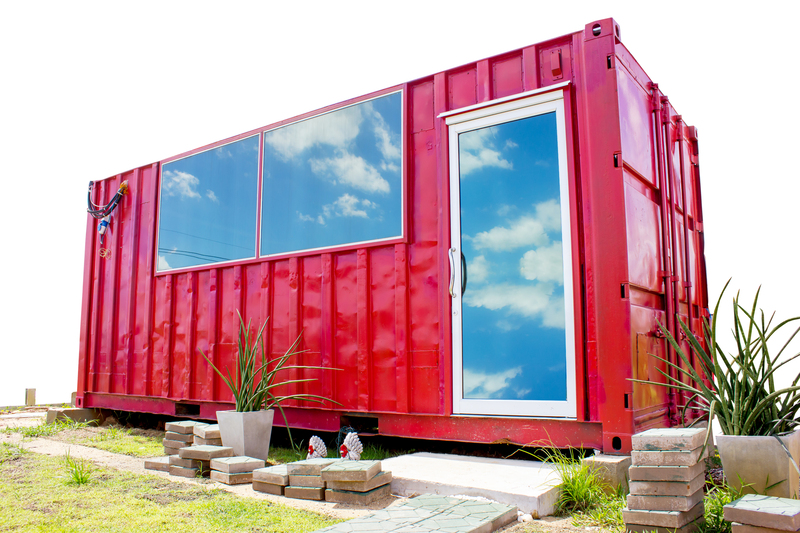Innovative Waste Solutions: Elevating Office Sustainability
In the current era of rapid industrialization and climate change, the environmental impact of workplaces is under increasing scrutiny. Offices, big or small, produce vast amounts of waste daily, from paper and packaging to electronic devices and food remnants. Innovative waste solutions are not just trends--they have become crucial in transforming the modern workplace into a sustainable hub, reducing ecological footprints, and demonstrating leadership in environmental responsibility. In this article, we'll delve deep into elevating office sustainability by exploring cutting-edge methods, technologies, and cultural practices that bring about real change.
Why Office Waste Solutions Matter
*Office sustainability* goes beyond recycling bins and energy-saving lights; it encompasses a holistic approach to responsible resource use, minimizing waste production, and fostering a circular economy. Engaging in forward-thinking waste management practices improves brand reputation, employee satisfaction, and compliance with environmental regulations, while often reducing costs over time.
- Environmental Responsibility: Reduces landfill use and pollution.
- Cost Efficiency: Minimizes waste management expenses and purchasing of new materials.
- Community Impact: Demonstrates commitment to environmental stewardship, influencing partners and customers.
It's clear that innovative waste management solutions aren't just about compliance--they are about building the workplace of the future.

Key Elements of Innovative Waste Solutions
1. Smart Waste Management Systems
Smart offices leverage technology to monitor and manage their waste with unprecedented efficiency. Smart bins equipped with sensors can:
- Detect fill levels and notify cleaning staff in real time, reducing overflow and unnecessary waste pickups.
- Automate sorting using AI to correctly separate recyclables, compostables, and landfill waste, improving recycling rates and reducing contamination.
- Track data for continuous improvement, allowing facility managers to refine processes and set goals.
Integrating intelligent waste management solutions transforms daily habits and enables data-driven improvements that accelerate office sustainability.
2. Comprehensive Recycling Initiatives
Recycling programs can go far beyond paper and plastic. Offices are adopting specialty recycling streams for:
- Electronic waste (e-waste): Proper disposal and recycling of obsolete computers, monitors, and peripherals.
- Toner and ink cartridges: Setting up refill or recycling collections for printer supplies.
- Food and compostables: Providing composting bins for organic waste from break rooms and cafeterias.
*Elevating office sustainability* requires embracing new recycling categories and educating employees on correct sorting practices. Clear signage, bins in high-traffic areas, and regular updates on recycling metrics foster participation and accountability.
3. Circular Office Procurement Practices
The circular economy model reduces waste by keeping products and materials in use for as long as possible. Offices can elevate sustainability by:
- Hiring suppliers with take-back schemes for used office equipment.
- Choosing refurbished furniture and electronics rather than buying new.
- Prioritizing recyclable and reusable packaging for office supplies and deliveries.
This cycle of reusing, refurbishing, and recycling materials prevents unnecessary waste and creates value for both the business and the environment.
4. Employee Engagement and Green Culture
No waste solution is effective without the full engagement of the workforce. Leading organizations:
- Appoint sustainability ambassadors or committees.
- Organize *green challenges* and incentives for reducing waste.
- Offer workshops and training on sustainable practices.
- Shape policy and procurement with employee feedback.
_Building a culture of sustainability_ means that green initiatives become a collective responsibility, forming part of the organization's identity and mission.
Technological Advances Elevating Office Sustainability
The digital transformation has brought forth a variety of technological advances to promote sustainable waste management in offices.
IoT-Driven Waste Monitoring
Internet of Things (IoT) devices automate the tracking and reporting of office waste in real-time. For example:
- Sensors in bins monitor capacity and composition, streamlining waste collection routes.
- Cloud-based platforms analyze data to identify waste reduction opportunities and track progress.
- Mobile apps empower employees to log their waste disposal and access educational content.
These solutions help organizations understand waste patterns and reinforce sustainability goals.
AI-Powered Sorting and Robotics
Artificial intelligence and robotics are revolutionizing recycling in the workplace. Smart sorting machines use AI and computer vision to:
- Identify and sort waste streams at the point of disposal.
- Reduce contamination by recognizing materials with high accuracy.
- Accelerate handling of large waste volumes in larger office complexes.
AI-powered waste reduction solutions drastically increase operational efficiency and greatly improve recycling purity rates.
Digital Platforms for Waste Reduction
Numerous digital solutions support deliberate waste reduction efforts:
- Document management systems minimize paper usage by digitizing workflows.
- Digital inventory tracking reduces over-ordering and eliminates surplus supply waste.
- Online marketplaces for exchanging or selling unused office equipment promote reuse within and outside the company.
Combining technology with strategic planning is a hallmark of the most innovative recycling solutions for offices.
Designing a Sustainable Office: Infrastructure and Beyond
Space Planning for Waste Flow
The physical design of an office influences how employees interact with waste management systems. Consider:
- Placing multi-stream waste stations in communal areas for easy access.
- Color-coded bins and clear instructions visible at the point of disposal.
- Centrally located resource-sharing hubs for office supplies and equipment.
_Optimized spatial organization ensures sustainable waste practices are easy, intuitive, and accessible._
Green Building Certifications
Aligning the office with standards like LEED, BREEAM, or WELL promotes a comprehensive approach to sustainability--including robust waste management criteria. Certification drives ongoing improvement and signals an unwavering commitment to environmental health.
Case Studies: Offices Excelling in Innovative Waste Management
Google's Zero Waste to Landfill
Google's commitment to office sustainability is demonstrated by its Zero Waste to Landfill certification in several locations. By combining smart sensor technology, rigorous composting, employee training, and partnerships with waste haulers, Google has successfully diverted over 90% of its office waste from landfills.
Unilever's Workplace Waste Champions
Unilever empowers employees as Waste Champions, responsible for regular audits, education sessions, and implementing recycling innovations. This grassroots approach ensures office-wide participation and ownership, yielding measurable reductions in workplace waste and an engaged, informed workforce.
Small Business Innovation: Circularity at a Startup
A London-based tech startup achieved remarkable waste reductions by outfitting all staff with digital note-taking devices, establishing a swap shop for office supplies, and organizing monthly circular economy workshops. Such grassroots efforts, even on a small scale, demonstrate that innovative waste solutions are accessible to organizations of all sizes.
Overcoming Barriers to Waste Innovation in the Office
While the journey to a zero-waste office is promising, challenges can hinder progress. Overcoming them can further catalyze sustainability.
- Employee Resistance: Solutions include education, incentives, and leadership role modelling.
- Budget Constraints: Many smart solutions result in long-term savings--even small steps can have big impacts.
- Lack of Awareness: Continuous communication of metrics and success stories builds motivation and momentum.
- Vendor Limitations: Partner with responsible suppliers and advocate for extended producer responsibility.
Most importantly, tailoring solutions to your unique context is vital--what works for a tech giant may differ for a non-profit or startup.
Metrics and Reporting: Measuring Success
Key Performance Indicators (KPIs) for Waste Reduction
Effectively tracking results is fundamental for continuous improvement in sustainability. Adopt a range of KPIs for full visibility:
- Waste diversion rate: The percentage of office waste diverted away from landfill to recycling or reuse.
- Per capita waste generation: Track waste volume per employee to measure individual and collective impact.
- Contamination rate in recycling streams: Lower contamination means higher recycling efficiency.
- Cost savings from waste reduction: Compare disposal budgets before and after implementation.
- Employee engagement scores: Assess participation and satisfaction with sustainability initiatives.
Regularly sharing results with the team builds transparency, celebrates progress, and identifies new opportunities for innovation.
Future Trends: The Next Generation of Innovative Waste Solutions
The path to sustainable offices is continually evolving. Looking ahead, several trends stand poised to shape office waste reduction:
- AI-powered circular supply chains: From procurement to end-of-life, algorithms will minimize waste generation and maximize reuse.
- Biodegradable office supplies: Adoption of plant-based or fully compostable alternatives to plastics and non-recyclables.
- Decentralized energy and waste systems: Micro-composters and resource recovery units on-site reduce transportation emissions.
- Gamification of sustainability: Apps that reward employees for pro-environmental actions, making zero-waste fun and competitive.
With these innovations, workplaces can move beyond sustainability compliance to true environmental leadership.

Practical Steps to Begin Your Office Sustainability Journey
No matter the size of your office, there are actionable steps you can take today to start your sustainability journey:
- Conduct a waste audit to understand current waste streams and identify key improvement areas.
- Set measurable goals for waste diversion and reduction.
- Introduce smart bins and clear signage to facilitate waste separation.
- Engage staff with training and regular feedback on progress.
- Partner with suppliers and vendors who prioritize eco-friendly packaging and take-back programs.
By prioritizing innovative waste solutions and actively involving your team, you can elevate office sustainability, enhance your organization's credentials, and play a significant role in preserving our planet for future generations.
Conclusion: The Sustainable Office of Tomorrow
Elevating office sustainability is no longer optional. With innovative waste management solutions, organizations can drive efficiency, engagement, and environmental protection. By embracing technology, fostering a green culture, and continually measuring success, the office of the future will not only respond to environmental challenges--it will lead the way in creating a cleaner, more sustainable world.
Start implementing these innovative waste strategies today, and watch your office transform into a dynamic, eco-conscious workplace!